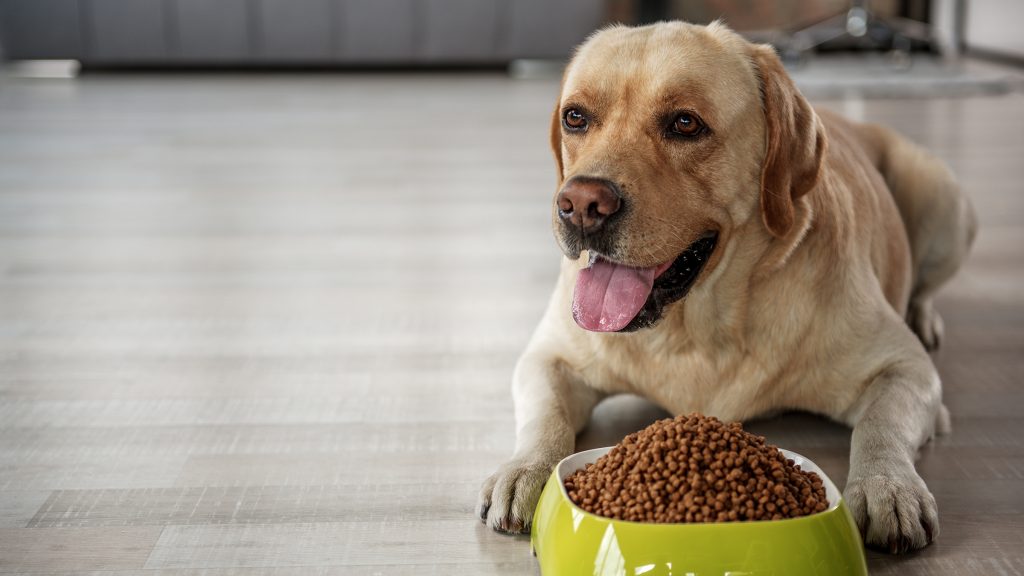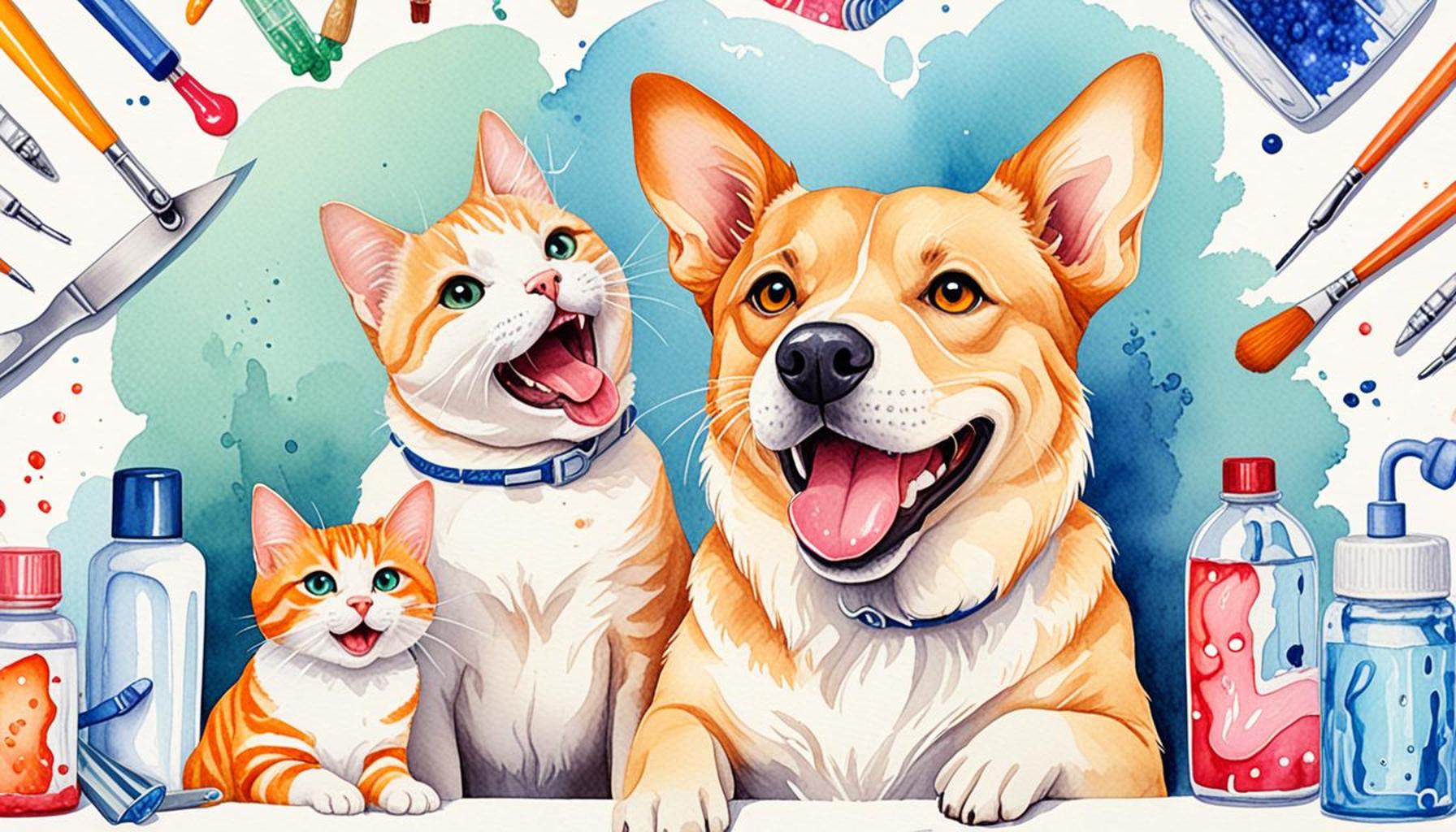Pet Obesity Prevention Effective Strategies for Healthy Pets

Obesity in pets is not merely a cosmetic concern; it affects their overall health and quality of life. The growing trend of pet obesity in the United States has reached alarming levels, with an estimated 50% of dogs and cats classified as overweight or obese. This troubling phenomenon necessitates a deeper understanding and actionable prevention measures from pet owners to ensure their furry companions remain healthy and thrive.
Understanding Pet Obesity
Pet obesity occurs when animals carry excess weight that can interfere with their normal functioning and lead to severe health issues. These issues include:
- Diabetes: Overweight pets can develop insulin resistance, leading to diabetes, which requires lifelong management with diet changes and medications.
- Joint Problems: Excess weight places additional stress on joints, leading to conditions like arthritis, which can severely limit mobility and quality of life.
- Heart Disease: Obesity can contribute to heart conditions, including congestive heart failure, due to increased strain on the heart and elevated blood pressure.
- Shortened Lifespans: Studies indicate that overweight pets tend to live shorter lives due to the cumulative effects of associated health problems.
Being proactive involves recognizing the signs of obesity, which can include a lack of energy, difficulty breathing, or an inability to engage in regular activities. Monitoring your pet’s weight and conducting regular check-ups with a veterinarian can help catch any issues early on.
Strategies to Promote a Healthy Lifestyle
Preventing obesity in pets relies heavily on intentional lifestyle choices, combining dietary management with physical activities tailored to your pet’s needs. Here are several effective strategies:

- Create a balanced diet plan with the help of your veterinarian: A tailored nutritional plan can address your pet’s specific needs, taking into account age, breed, and activity level. Choose high-quality pet food that lists meat as the primary ingredient and avoid fillers.
- Encourage regular physical activity: Engaging in daily walks or play sessions is essential. For example, a 30-minute walk for dogs can significantly impact their weight and mental stimulation. Interactive toys or agility training can also make exercise fun.
- Limit treats: While it’s easy to indulge pets with treats, limiting their intake is vital. Consider healthy alternatives like fresh vegetables or specially designed low-calorie treats. Set a clear guideline for treats, ensuring they do not exceed 10% of your pet’s daily caloric intake.
By taking these proactive steps, pet owners can make substantial advances in preventing obesity, paving the way for longer, healthier, and happier lives for their beloved companions. Raising awareness and motivating the community to take action can lead to a significant improvement in the overall health of pets across the nation.
CHECK OUT: Click here to explore more
Essential Strategies for Pet Obesity Prevention
To effectively combat pet obesity, pet owners must embrace a holistic approach that synthesizes nutrition, exercise, and consistent health monitoring. Understanding the intricacies of these components is crucial in fostering a healthier lifestyle for pets.
1. Nutritional Knowledge: Building a Foundation
At the heart of pet obesity prevention lies proper nutrition. Pet owners should consult with their veterinarian to formulate a balanced diet plan that reflects their pet’s unique needs. Essential elements to consider include:
- Life Stage: Puppies, adult dogs, and senior pets have significantly different nutritional requirements. Ensuring the right balance of proteins, fats, and carbohydrates is vital.
- Breed Considerations: Certain breeds are predisposed to obesity, making it essential for owners to tailor dietary options according to breed-specific tendencies.
- Measuring Portion Sizes: Accurate serving sizes play a key role in managing a pet’s weight. Pet owners should utilize measuring cups or scales to avoid overfeeding, which can often happen during mealtime.
Moreover, pet parents are encouraged to read ingredient lists carefully, prioritizing foods rich in high-quality proteins and minimizing fillers that can contribute to excessive weight gain. A pointed shift towards whole-food based options could prove advantageous.
2. The Importance of Exercise
Alongside nutrition, incorporating regular physical activity into a pet’s daily routine is critical in preventing obesity. Engaging in exercise not only helps burn calories but also enhances mental stimulation, improving overall pet behavior. Here are some enjoyable activities to consider:
- Daily Walks: Aim for at least 30 minutes of walking each day. Dogs, in particular, thrive on routine short walks, which also serve as a time for owners to connect with their pets.
- Interactive Playtime: Use toys that require movement, such as feather wands for cats or fetch balls for dogs. This not only keeps them physically active but also mentally engaged.
- Agility Training: Setting up agility courses in backyards or participating in local agility classes can provide thrilling challenges for pets while fostering exercise.
Additionally, incorporating fun activities not only promotes exercise but strengthens the bond between pets and owners, making it a rewarding endeavor for both.
3. Regular Monitoring and Veterinary Visits
Frequent check-ups with the veterinarian are crucial. Regular weigh-ins allow pet owners to monitor their pet’s weight trend effectively. It is also an opportunity for professionals to provide tailored recommendations and adjustments to diet or exercise as needed. Pet owners should be vigilant about recognizing early warning signs of unhealthy weight gain, such as decreased energy levels or a noticeable waistline.
In summary, implementing comprehensive pet obesity prevention strategies—from dietary management to structured exercise and ongoing veterinary care—can profoundly enhance a pet’s life quality. Communities that advocate conscious owner education and professional guidance will see significant improvements in pet health and well-being.
| Strategy | Benefits |
|---|---|
| Portion Control | Prevents overfeeding and helps maintain a healthy weight. |
| Regular Exercise | Enhances overall fitness and strengthens the bond between pet and owner. |
| Balanced Diet | Provides essential nutrients and prevents obesity-related health issues. |
| Regular Veterinary Check-ups | Ensures early detection of weight issues and tailored health advice. |
Pet obesity is an alarming issue that continues to climb, placing numerous pets at risk for severe health complications. Incorporating portion control into a daily feeding routine can dramatically curtail excessive calorie intake, allowing pets to maintain a healthy weight. Alongside this, engaging your pet in regular exercise not only aids in weight management but also fosters a deeper connection between the pet and their owner.Furthermore, providing a balanced diet enriched with vital nutrients is crucial; it can significantly reduce the chances of encountering obesity-related health problems such as diabetes and arthritis. Lastly, arranging for regular veterinary check-ups is vital for early detection of potential weight issues. These strategic measures serve as effective pathways to ensure your beloved pet leads a long, healthy, and active life, combating the growing issue of pet obesity head-on.
SEE ALSO: Click here to read another article
Creating a Balanced Environment for Healthy Pets
Beyond the core components of nutrition and exercise, creating a supportive environment is essential in the fight against pet obesity. This environment not only encompasses physical spaces but also involves pet-owner interactions that encourage healthy habits.
1. Understanding Treats and Rewards
While treats can be a delightful reward for pets, they can also contribute significantly to weight gain if not managed properly. Pet owners should consider the following:
- Choose Healthy Options: Opt for low-calorie treats or even fruits and vegetables that are safe for pets, such as carrots or blueberries. These alternatives can satisfy a pet’s desire for snacks without the added calories.
- Swapping Treats for Praise: Redirect the focus from food rewards to verbal praise or additional playtime. This approach fosters behavioral reinforcement without contributing to caloric intake.
- Portion Control: When giving treats, owners should account for the calories and adjust meal sizes accordingly to maintain a balanced overall caloric intake.
By redefining how and when treats are given, pet owners can contribute positively to their pet’s weight management journey.
2. Encouraging Socialization and Playdates
Engaging with other pets can stimulate physical activity and provide social benefits for pets. Consider organizing playdates with other pet owners or enrolling pets in group classes such as agility or obedience training. Here’s why this approach is impactful:
- Increased Activity: Dogs, in particular, benefit from running and playing with other dogs, promoting a natural instinct for exercise. This can help them burn off calories while enjoying their time.
- Mental Stimulation: Social interactions can reduce boredom, which often leads to overeating. Unique play experiences can steer pets away from mindless munching.
- Community Support: Building a community of fellow pet owners fosters support, motivation, and shared resources for maintaining healthy lifestyles.
Encouraging socialization not only facilitates a steady routine of physical activities but also enriches a pet’s social life.
3. Utilizing Technology for Tracking and Motivation
Embracing technology can play a significant role in monitoring a pet’s health and activity levels. Pet owners have access to a variety of tools and apps designed for this purpose. Here are some noteworthy options:
- Fitness Tracking Devices: Wearable devices can track a pet’s activity levels, helping owners ensure their pets meet daily exercise goals. Many of these devices sync with smartphones, providing real-time updates and analytics.
- Nutritional Apps: Several applications allow owners to log their pet’s meals and track caloric intake effectively. These digital solutions can help correlate dietary habits with weight changes.
- Online Veterinary Services: Telemedicine can provide convenient access to veterinary professionals, making it easier to seek advice on nutrition and health management, especially concerning weight-related issues.
Leveraging technology not only enhances accountability but also makes it easier for pet owners to stay informed and engaged in their pets’ health journeys.
4. Education and Continuous Learning
Finally, educating oneself about pet health is fundamental in preventing obesity. Pet owners should seek out resources such as workshops, webinars, or literature from credible animal nutritionists and veterinarians. Potential areas to explore include:
- The Role of Breed-Specific Health Risks: Understanding the nuances related to specific breeds can help inform dietary and exercise decisions. For instance, knowing that certain breeds are prone to joint issues can guide weight management efforts.
- Changing Pet Needs Over Time: As pets age, their dietary and activity requirements may shift. Being adaptable and knowledgeable about these changes ensures long-term weight management.
- Utilizing Community Resources: Local shelters, animal advocacy groups, and even pet stores often host educational events that can benefit pet owners striving to combat obesity.
Continuous education empowers pet owners, enabling them to create informed strategies that not only prevent obesity but support holistic pet wellness.
SEE ALSO: Click here to read another article
Conclusion: Paving the Way to Healthy Pets
In conclusion, addressing pet obesity requires a multifaceted approach that emphasizes prevention, education, and collaboration. It is crucial for pet owners to understand that the health of their beloved companions is intrinsically linked to their lifestyle choices. For instance, the American Kennel Club (AKC) reported that approximately 56% of dogs and 60% of cats in the United States are classified as overweight or obese. This stark reality highlights the urgency for a proactive stance on pet health.
As pet owners, we have the responsibility to create an environment that not only promotes healthy eating and regular exercise but also nurtures emotional connections and social interactions among pets. To foster a healthy lifestyle, consider implementing strategies such as recognizing the impact of treats. For instance, instead of commercial snacks, try offering healthy alternatives like carrot sticks or green beans, which can satisfy their cravings without the added calories.
Encouraging playdates can also play a crucial role in a pet’s physical activity. Organizing gatherings with other pet owners in your neighborhood can make exercise a fun and social endeavor for both pets and their owners. Moreover, utilizing technology such as pet activity monitors can help track your pet’s fitness levels, prompting owners to stay engaged with their pets’ exercise routines.
Moreover, continuous learning about specific health needs and recognizing the evolving requirements of pets can enable owners to make informed decisions. Engaging with resources like local community events, online veterinary services, and credible educational materials plays an indispensable role in fostering a culture of health awareness regarding pet obesity. For example, many community centers offer free workshops on pet nutrition or fitness, which can be a valuable opportunity for pet owners to access expert knowledge.
As we navigate our pets’ health, let us remember that the most effective strategies for pet obesity prevention are built on a foundation of consistent care, knowledge, and community support. By embracing these initiatives, we can ensure that our beloved companions lead healthier, happier lives. Ultimately, a commitment to proactive management is essential, not only for the prevention of obesity but for the overall well-being of our furry friends.



